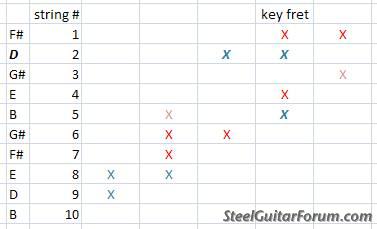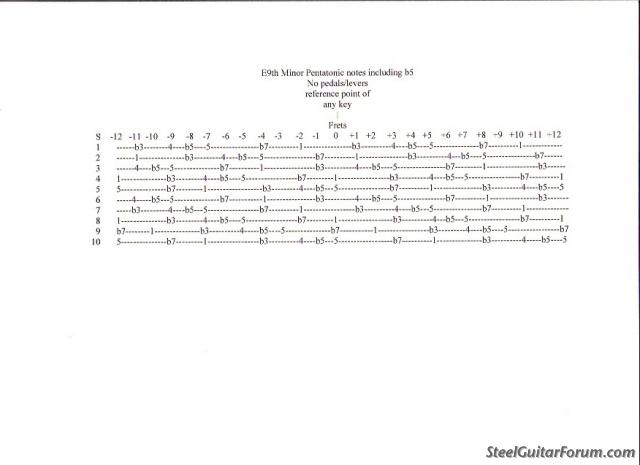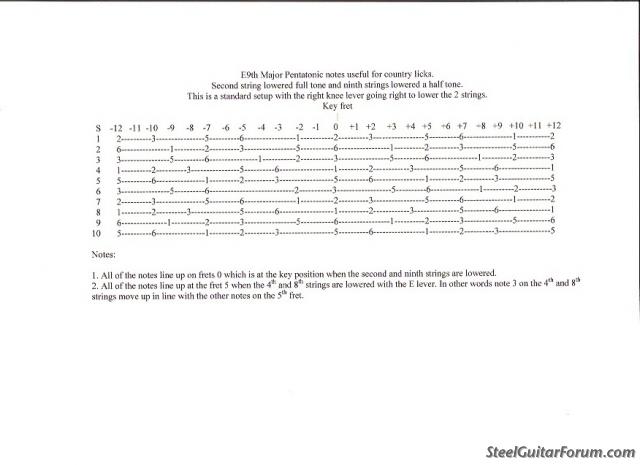I need to know more about that postion. I know how it works for major stuff with AF ..but never use it for bluesy stuff with just the A pedal. I need to get on that and learn some licks there in that spot. The first diagram you posted BOb, was three or four frets down from root...the one you are talking about with the A pedal is three up from root. The one most 6 string guitarists start with is AT root. I have a box diagram for this position, just wanted to compare it to yours if you had one.b0b wrote:The "next position" is 3 frets above the key fret and involves a lot of use of the A pedal. I'm at a loss at how to show it because, as others have pointed out, it's pretty much all at the same fret. That's where you'll find The Allman Bros. "One Way Out" solo. It's all at one fret on pedal steel, bouncing on the A pedal to slide the b7 note up to the root on the 5th string.Ben Jones wrote:bOb...THATS IT!! exactly. the next position up from that would be the one most guitarists would tackle as their first "pocket" and how you have it diagramed is exactly how it its most prevalant in the 6 string lit. Thank you for those diagrams, they WILL be helpful...got the next position?
as always, Ive learned from this thread...thanks.


